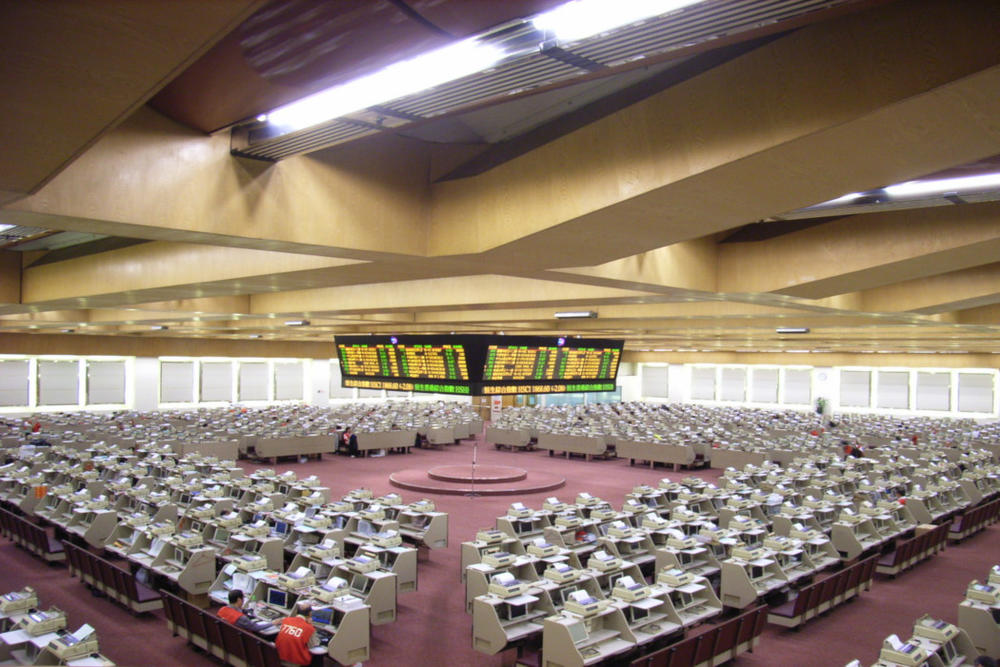Beyond the US-China Trade War: Decoupling in the Capital Markets.
by Soo Yeon Kim, Edward Low, Rui Shan Seah & Jun Jie Yeoh
№ 15/2020 from Aug 17, 2020
Soo Yeon Kim, Edward Low, Rui Shan Seah, and Jun Jie Yeoh.
China is contesting leadership not only within existing international institutions but by establishing alternatives. It may draw more economies into its economic and consequently political orbit.
Hong Kong Stock Exchange
Image Credit: heycreation (Flickr)
Current trends in the world’s capital markets highlight in important ways the contestation between the US and China. This contestation began well before the pandemic, when the US- China trade war began with the US imposition of tariffs on Chinese goods in 2018.
Recent parlance has given it the label ‘decoupling,’ to denote economic disengagement from China that has involved not only the United States but also Japan and several European countries. In order to understand the contestation over financial systems, one must look at the market’s principal actors: firms.
An increasing number of Chinese firms, particularly US-listed Chinese tech giants such as Alibaba, JD.com and NetEase, are placing secondary listings on the Hong Kong Stock Exchange.
While US capital markets, offering high liquidity and a deeper and broader investor base, are still the top destinations for initial public offerings (IPOs) of Chinese firms, the pattern of secondary listings shows that Chinese companies are looking to the Hong Kong Stock Exchange as another path to new capital markets.
The IPO listing of tech giants such as Alibaba is only the beginning of this trend of secondary listings on the Hong Kong Stock Exchange. As the influence of the Hang Seng Index grows, together with regulatory innovations such as the exchange-traded funds (ETF) tech index, the total market value of companies will continue to increase.
This, in turn, is likely to attract IPO offerings also from high-tech companies, especially internet, fintech, biotech, and other technology companies with high-growth value.
There are two main forces driving firms to participate in the financial decoupling of these two leading economies. First, the US, and many of its allies, are actively decoupling from China. Efforts to tear up, rebuild, and reshore supply chains are gaining momentum.
Governments are paying firms to leave China and shift production elsewhere. US Trade Representative Lighthizer has decried the ‘strategic vulnerability’ of relying on countries such as China for critical medical supplies, and the Japanese government has allocated US$2.2to help firms shift production out of China.
In May, the US Senate approved legislation that could delist Chinese companies from US exchanges unless they agree to an audit of their books for three consecutive years and show they are not under the control of a foreign government. In addition, the US Nasdaq unveiled a proposal to impose a minimum value on the size of IPOS, requiring companies from “Restricted Markets” (such as China) to raise a minimum of $25 million in their IPO or at least a quarter of their post-listing market capitalization.
This announcement in May followed investigations revealing Chinese companies fabricated financial results en route to IPOs. The Luckin Coffee scandal, for one, found that this Chinese rival to Starbucks had fabricated US$314 million in sales. With more than a quarter of Chinese IPOs on Nasdaq since 2000 grossing less than the minimum $25 million, the direct consequence of these initiatives is to push out these firms and also to stem the influx of Chinese firms into the American capital market. This is one force that is pushing Chinese firms to seek alternative capital markets.
Second, China is encouraging its firms to come home. In 2019, Xi Jinping’s government launched the Shanghai Stock Exchange Science and Technology Innovation Board, otherwise known as the STAR market and promoted as China’s version of the US Nasdaq. China’s largest computer chip maker Semiconductor Manufacturing International Corp (SMIC) delisted from the New York Stock Exchange last year and just last month (July) listed its shares on the STAR Market.
Ant Group, Alibaba’s payments arm, announced it would list shares both on the START Market and in Hong Kong. The mainland has long sought to bring Chinese companies back to China while also actively encouraging innovative technology companies, particularly start-ups, to list on Shanghai’s Star Market.
The IPO listings of companies such as QuantumCTek, SMIC, and Cambricon, China’s state-backed leader in AI chips, reflect the acceleration of the Chinese tech industry toward self-sufficiency in key components, especially as access to American components and networks is becoming increasingly more difficult.
Additionally, the ease of regulations on the STAR Market provides an alternative path for firms to raise capital where regulatory scrutiny is much lower than in the US market.
More than 100 Chinese technology companies have listed on the STAR Market since it opened. It is attractive both for the home-turf advantage it offers as well as more dynamic market pricing. The board allows stocks to rise or fall by a maximum of 20% in a day, higher than the usual 10% limit allowed by other domestic exchanges.
The movement of Chinese companies out of US capital markets to Hong Kong and especially to Shanghai’s STAR market reflects China’s competitive bid for ascendancy in the emerging tech ‘cold war’ with the United States.
Seen more broadly as a reflection of the contestation between these two actors, the trends in the IPO market are yet another indication of growing fragmentation of the global economy into China-led and US-led institutions. The Asian Infrastructure Investment Bank and the New Development Bank, and now the STAR Market, offer governments and firms around the world new avenues for development finance and for raising capital. We can readily expect that China will continue to form new institutions and marketplaces for economic exchange. Who will join?
Prof. Dr. Soo Yeon Kim teaches at the National University of Singapore. The other authors are undergraduate research assistants working with her on the impact of the US-China Trade War on trade and investment in the Asian region.

